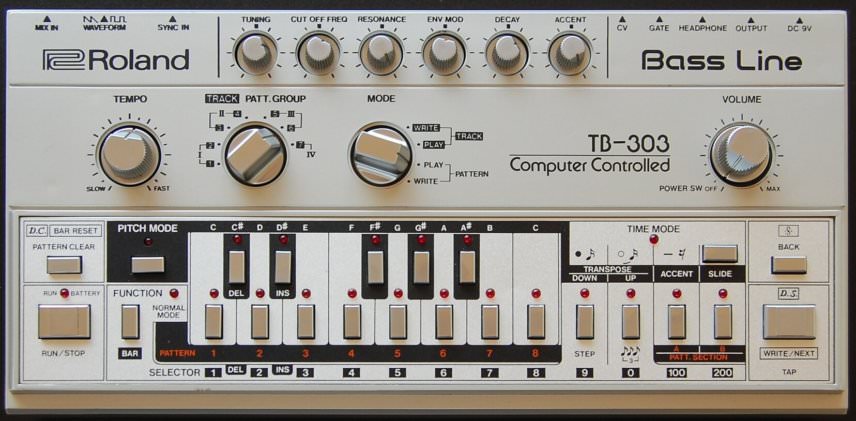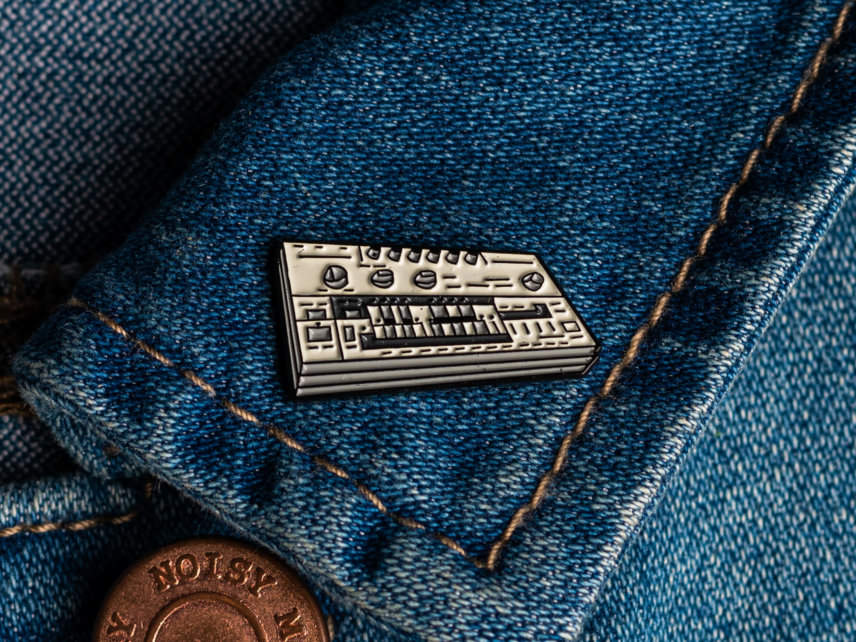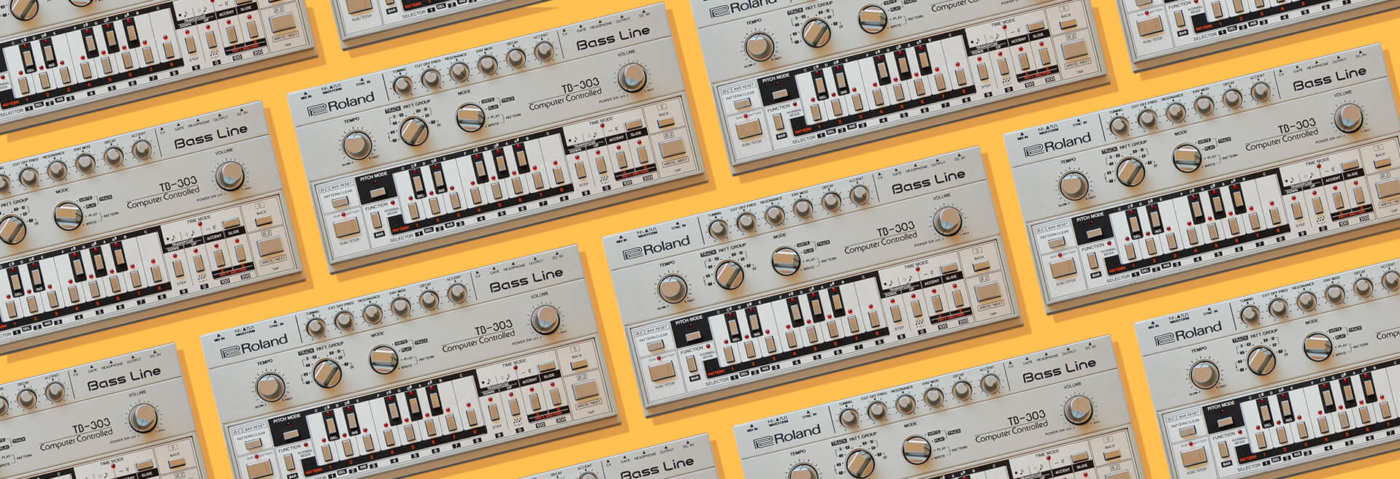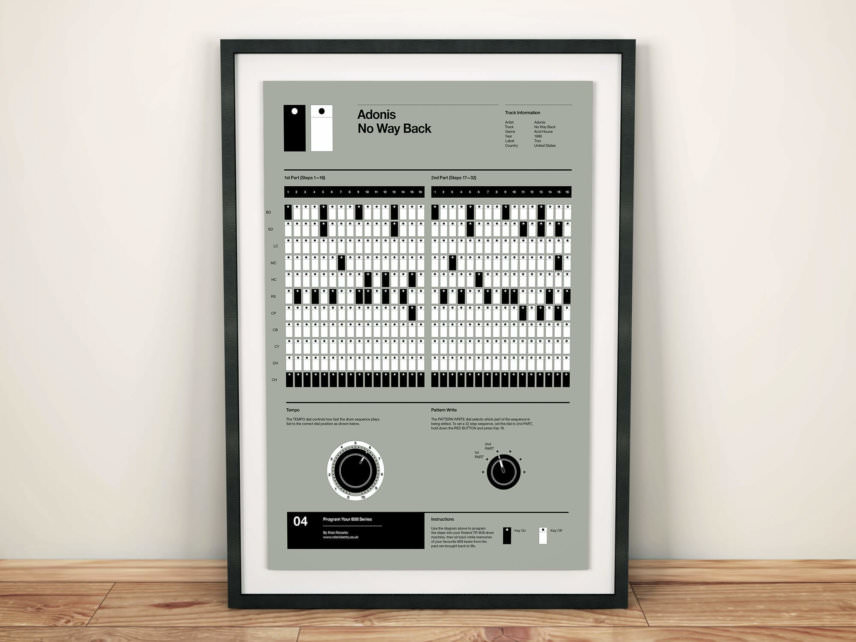In the latest instalment of Hardware Focus, we take a look at a cult classic: the Roland TB-303. A small unit with a big history, Roland had no intentions on making this sound like a real bass guitar. That is the misconception that many people have about the TB-303.
With great hope and promise, in 1982 Roland released the TB-303 Bassline synthesizer. A machine designed by Tadao Kikumoto who also designed the TR-909, Roland ceased production of the device in 1984 due to poor sales and a disappointing response from both the public and critics. Despite the grand ambitions Roland had for the unit, it failed to connect with its intended audience and users quickly dismissed the bass emulator.
Consequently, it should have been confined to the bargain bins of music stores with not much more to say on the matter. Suprisingly, this would be just the start of its momentous journey as many years later it would become one of the most sought after synthesizers of all time.
The most successful failure in tech history?
Once described as “one of the most successful failures in tech history” the silver box changed the course of musical history and inadvertently helped cause a shift in the law regarding music events. It caused a political storm in the UK and was responsible for one of the most important youth movements since Rock and Roll.
Whilst there have been no other notable incidents of synthesizers climbing back from such a tumultuous launch there have however been a few other interesting moments in history where something has been designed for one use and later applied to something entirely different. The record player, for example, designed by Thomas Edison. It is incredible to think that it was never designed for music!
Edison saw no benefit in his invention being used for the pleasure of listening to music and in fact was averse to the idea. The original intention for his recorded discs was the spoken word to be used for transcribing letters in the office. Rumour has it, he rapidly changed his tune when he saw the potential financial benefits the sales of musical recordings brought in. At the time, with the recorded disc still in its patent period, he gained a small cut of every sale, which quickly amounted to a hefty sum once the publics insatiable appetite for music took hold. He could never have predicted the impact his invention would ultimately have on popular culture.

The humble post-it note too was never intended to take the path that it did. The designer originally wanted to create a very strong glue but ironically did the exact opposite by creating a very weak glue that lent itself perfectly to a removable piece of sticky paper for office use and the Post-It was born.
Back to the 303. On first listen, you’d be forgiven for dismissing the Transistorized Bass (TB) as nothing more than a one-trick monosynth but the seismic shift in music culture this machine would later cause would result in ripples the music industry had seldom seen before.
Costing £234 or $395 at the time of release, Roland announced the TB-303 at the same time as the excellently named Drumatix TR-606 drum machine under the “Pro-Form” banner (meaning PROfessional perFORMance) which may suggest that if it hadn’t failed there may have been other machines in the range to follow.
The layout is now the mainstay for the majority of monosynths and bass emulators today. The plastic silver box consisted of 6 knobs at the top which were largely responsible for shaping the sound with a 24db low-pass filter with a number of envelope modulators and an accent knob, all of which contributed to the unique sound the 303 offered. You have the option of 2 waveforms, square-wave or sawtooth and it contained a built-in sequencer which allowed you to create 64 one bar patterns and 7 songs. A fairly comprehensive storage system in its day.
Not a Real Bass Sound
A little known fact, Roland pinned their hopes on rivalling guitar manufacturer Fender by entering the lucrative bass market. Fender was the number one manufacturers of bass guitars at the time. Their aim was for guitarists to use the TB-303 instead of a traditional bass guitar in conjunction with their TR-606 drum machine. But, from the outset, the odds were against them.

They made the catastrophic mistake of supplying only a Japanese manual to the US market. The Roland TB-303 was already notoriously difficult to program but without an English manual, it would be near-impossible to figure out. Many of the lucky few who were fortunate enough to get a sound out of it were disillusioned for it didn’t sound anything like a bass guitar. Let’s get one thing straight. Roland had no intentions on making this sound like a real bass guitar. That is the misconception that many people have about the TB-303.
Roland was fully aware of its quirky voice and unique characteristics but for them, that was the point. To do something different. To provide the musician with a bottom end to their compositions that was synthetic and distinctive. Roland’s engineers referred to the acidic characteristics as “wacky sounds” on its release. They could have omitted the acidic squelches and bleats of the 303 but they made a conscious decision to give the user the option to use them or not.
On its release, the majority of users chose not to. For most users it was simply too laborious to program and far too bizarre-sounding so after 2 years, Roland sold them off as cheaply as possible with existing users ditching their units to second-hand music stores. That is how so many of them ended up in the bargain bins of music stores all over the world.
However, there were some commercial successes which used the TB-303, notably Orange Juice’s Rip It Up which peaked at number 8 in the UK charts. Heaven 17’s Let Me Go and Shannon’s Let the Music Play, all of whom successfully deployed the TB-303 for their basslines but as far as commercial success for the device goes, it was a failure for Roland and a decision was made to discontinue production of the units.
This should have been the end for the Roland TB-303 but this was not even the start of the story as something astonishing was about to happen which would result in international interest unlike almost any other synth had experienced before.
As prices for second hand 303’s tumbled producers in Chicago were able to pick them up as little as $50 and as a result, a number of tracks began to appear using the TB-303 such as Adonis’s No Way Back and We’re Rocking Down the House but it was the trio Phuture consisting of DJ Pierre, Spanky and Herb-J that were the first to turn with the knobs on the 303 whilst the machine was in sequence. This would become known as the “acid house sound”.
A brief history of Acid House
In 2014, Forbes magazine described this sound as “a psychedelic mouth harp”. This seemingly minuscule act would prove to be the catalyst for an entirely new sub-genre called Acid House as the city of Chicago lapped up the unique sound and demand for copy cats resulted in an influx of imitators. Although Phuture’s Acid Trax was the first record to use the Acid sound which largely came from the movement of 5 of the 6 knobs along the top of the synth (the other is a tuning knob which to my knowledge has never been intentionally touched during an acid house recording or performance) it was Sleazy D’s I’ve Lost Control that made it first to vinyl.
Over the course of the next few years, the TB-303 sound would be transported to the UK where clubbers would embrace it and a series of unexpected events led to mass media coverage. As demand for the music increased, this led to illegal warehouse parties catering for many thousands of people which resulted in clashes with authorities and ultimately a change in the law.
After some headline-grabbing police raids and a ban by UK’s Radio 1, the music shifted underground with a small handful of tracks entering the charts but the foundations for the nightclubbing scene we know today had now firmly taken hold. This would be the catalyst for the international dance movement we know today, which over 30 years on is recognised and celebrated as the start of the rave and acid house scene now worth many billions of dollars internationally.
The incredible story of the Roland TB-303 led to dozens of clones and emulators as Roland were initially reluctant to re-release the TB-303. In part we have the TB-303 to thank for the phenomenal success of dance music. As countless myths surrounding the original machines circulate in dance music folklore, the original devices now command four figure sums on the second-hand market.
I still often dream about catching a 303 in a bargain bin. So if you find yourself in a car-boot sale or bric-a-brac store keep your eyes peeled. You never know, the next time you’re in a used keyboard store, it could be your lucky day.
Suddi Raval is a journalist, lecturer, DJ and producer based between Manchester and London. His book “A Brief History of Acid House’ is available in the Attack store.

